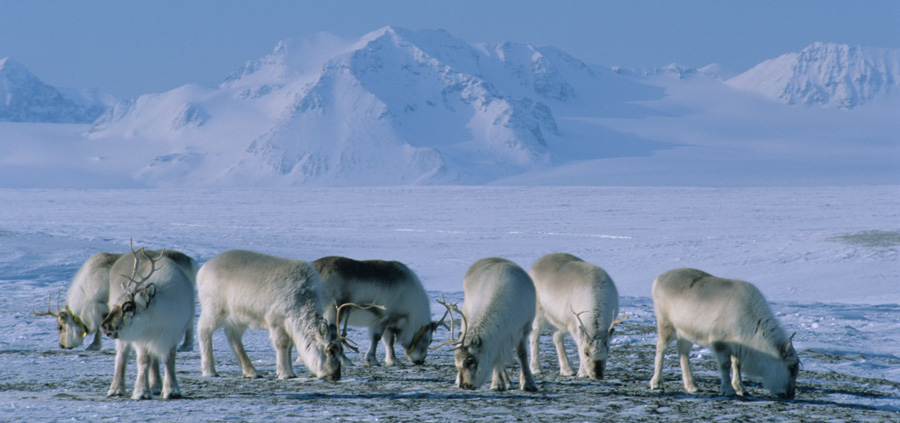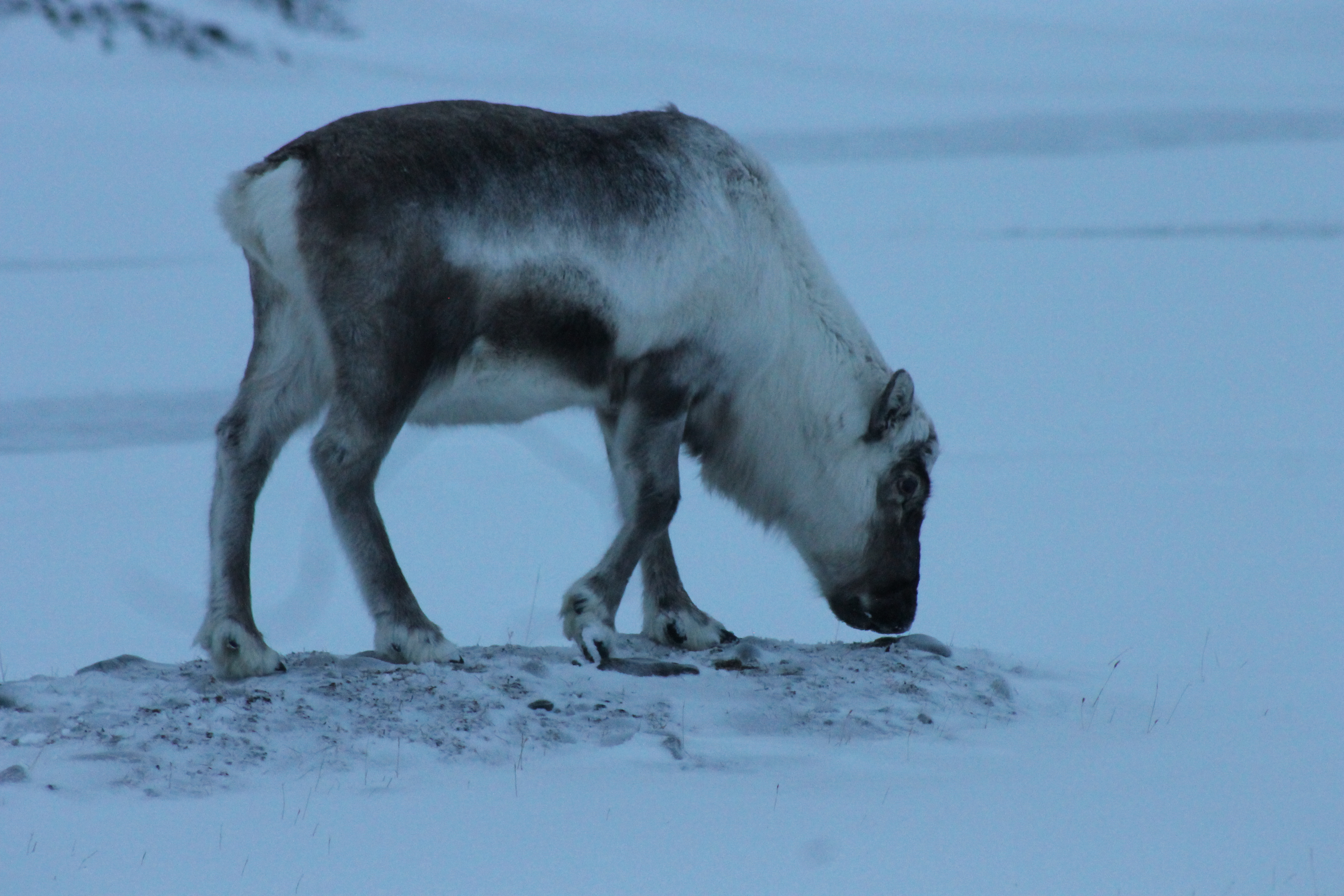Thanks to climate change, some Svalbard reindeer have added kelp to their diet
The shift shows the animals have some adaptability — but it probably won't meet their long-term nutritional needs.

With more frequent winter rains coating tundra plants with an icy barrier, reindeer in one part of the Arctic are turning to the sea for food.
Reindeer on the Norwegian island of Svalbard are increasingly grazing on kelp when they cannot break through the ice to reach the lichens and mosses that are their normal food, scientists report in a new study published in the journal Ecosphere.
The kelp-eating behavior is directly tied to rain-on-snow events, the international team of scientists found. That link was confirmed by close monitoring of the island’s reindeer over several years — from 2006 to 2015 — combined with analysis of weather records and ground ice cover. Analysis of the chemical fingerprints left in reindeer feces also confirmed the link.
Winter rains that are becoming more common as the Arctic climate warms, and Svalbard is a hotspot for that trend.
“This rain on snow, this is a place where it’s becoming more and more normal,” said Jeffrey Welker of the University of Alaska Anchorage, one of the study co-authors. In one two-week period in January and February 2012, for example, Svalbard received 272 millimeters (10.7 inches) of rain.

The seas that surround Svalbard are also becoming increasingly open in winter, allowing bunches of kelp to wash ashore to beaches and to access by reindeer that move down to the island’s coast.
The newly published study was inspired by anecdotal accounts of kelp-munching reindeer and some smaller-scale documented observations.
The new study fills in important details, adds context to the observations and covers behavior of more than 2,700 radio-collared reindeer. The more ice there was on the landscape, the more likely it was that reindeer would go down to the coastal areas to graze, the scientists found — up to 30.5 percent of the population became shoreline feeders, depending on weather conditions, the study said.
The study also uses chemical analysis of plants — both on land and in the water — from feces of tracked animals that was collected in 2013 and 2014. The dried and crushed feces and plants were analyzed at UAA’s Stable Isotope Laboratory, said Welker, who manages a program investigating the chemical signs of Arctic climate change.
The kelp-eating pattern can be traced with chemical fingerprints.
“Fundamentally, the nitrogen and the sulfur cycles out in the ocean are just really different from what happens on land,” Welker said. For kelp and other marine plants, bacterial process cause the lighter isotopes to leak out into the atmosphere, leaving behind the heavier isotopes, he said.
Is eating kelp good for reindeer? For now, the verdict is mixed.
On the plus side, the kelp-eating habit is evidence that the “effects of climate change may be buffered in part by behavioral plasticity and increased use of resource subsidies,” the study said. In other words, it shows reindeer have made an adjustment to the warming conditions.
It may be one in a series of adaptations on Svalbard. “This is a group that’s had a whole lot of opportunity to adapt to some of the harshest climate that we’ve had,” Welker said.
On the minus side, kelp appears to be less than ideal as reindeer food. Kelp-eating reindeer tended to have diarrhea, possibly associated with sea salt, the study said. And it is not as nutritious for the animals as are the usual tundra plants.
“It satisfies their energy needs temporarily but sacrifices their nitrogen needs,” Welker said. “It could be a bit like junk food.”
Reindeer are currently turning to kelp for “short bursts,” but longer periods might cause problems, he said.
Worldwide, populations of reindeer and caribou have dropped 56 percent since the mid-1990s, according to the 2018 Arctic Report Card released in December by the National Oceanic and Atmospheric Administration. More frequent and severe rain-on-snow events are listed as one of the probable causes of the Arctic-wide decline.
Outside of Svalbard, populations without access to kelp might also be turning to different foods when winter rains form ice barriers over the tundra. Welker and colleagues from the University of Alaska and other institutions are trying to determine what isotopes reveal about possible changes in winter grazing habits of Alaska’s Central Arctic Caribou Herd.